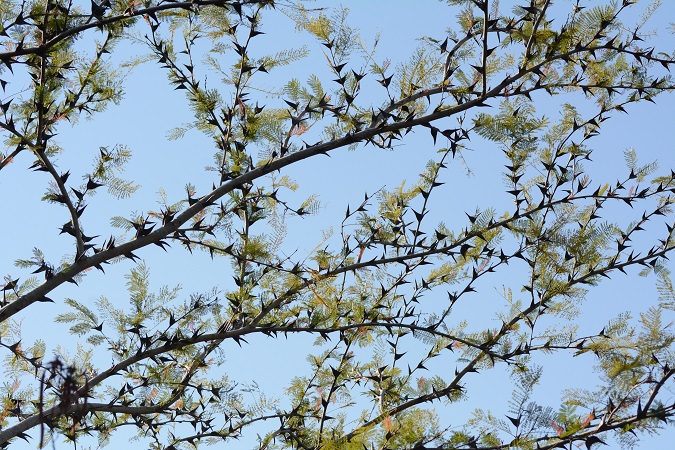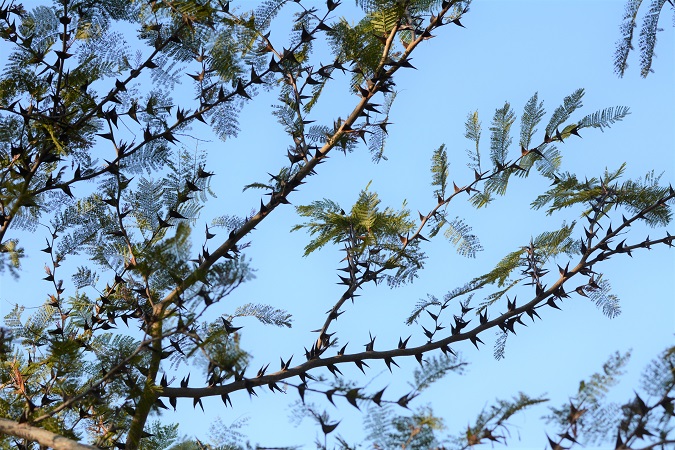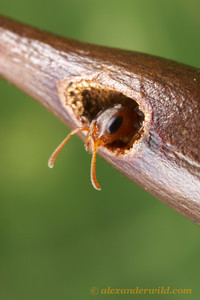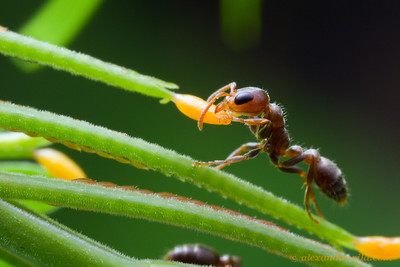
Updated June 2022
How the Acaia Tree Protects Itself in Four Amazing Ways
The Acacia is a large family of shrubs and trees in the subfamily of Mimosoideae and is found in tropical countries around the world. It is a very large family with more than 800 species.
Many plants evolved some form of protection which prevent them from being eaten by herbivores. A couple of these methods include poison in the leaves or thorns on the branches. Some Acacia trees have gone overboard with security to prevent animals from eating their leaves.
1. Thorns
The most obvious of their defences are the thorns. The tree has huge thorns that would punch a hole through your hand if you grabbed a branch.
2. Poison
You might think that the thorns would be enough prevention to discourage most animals from climbing the tree. In addition to the thorns, the leaves contain a poisonous alkaloid.
3. Fireproof
This amazing tree even protects itself from a fire. If an Acacia tree burns down, only the part above ground dies. The root remains alive and the tree will start to grow again. The only way to kill this tree is to dig up and destroy the roots.
4. Security Guards
If all of this is not enough protection, the tree has a secret weapon. Ferocious biting ants hide in the tree. You may not see them, but if you touch the tree, you will soon have a serious wound from these tiny but dangerous ants.
The large thorns are hollow and the Acacia Ants are hiding inside them. The ants drill a tiny hole in the thorns. Each thorn is a tiny ant village where the occupants live and raise their young. When they detect movement on their branch from an animal, insect or human hand, the Acacia Ants will rush out to defend their home. Many painful bites will soon drive the intruder away.
In addition to warding off predators, the ants will kill any kind of invasive plant that tries to grow on the tree. They will also attack and drive off any other species of ant.
The Acacia Tree not only provides shelter but food as well. Beltian, ant food containing both protein and lipids, grows at the tip of each leaf. At the base of the leaf is a tiny opening that produces sweet, carbohydrate-rich nectar that the ants need to sustain their lives.
Pollination
If the Acacia Ants drive off all invaders, how does the tree get pollinated to reproduce? The ants protect only the tree and the leaves but not the blossoms. The flowers contain a repellant that the ants do not like. Therefore, insects such as bees can visit the flowers without risk of being attacked as long as they remain only on the flower and do not visit any other part of the tree. While the Acacia Ants do not protect the flower, they protect the branches, thereby allowing flying insects to pollinate the blossoms, while protecting the flowers from insects that would eat the seeds.
Mutualism
In return for food and shelter, the ants protect the tree. Mutualism exists when both insect and plant derive a benefit from the relationship. The tree has no use for the Beltian. It produces this food solely for the benefit of its security guards.
Photo Credit – Photos of the ants used with the kind permission of Alexander Wild. Photos of the trees and thorns are my own.





